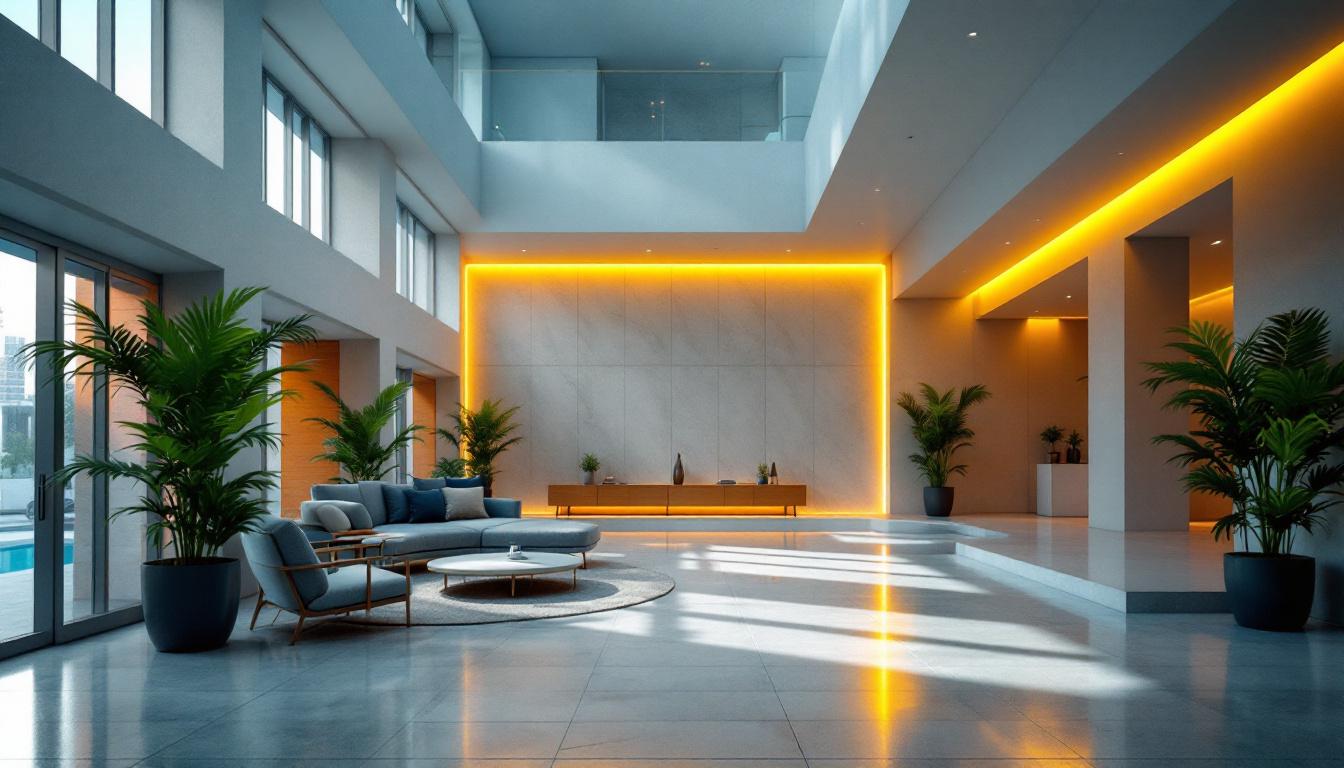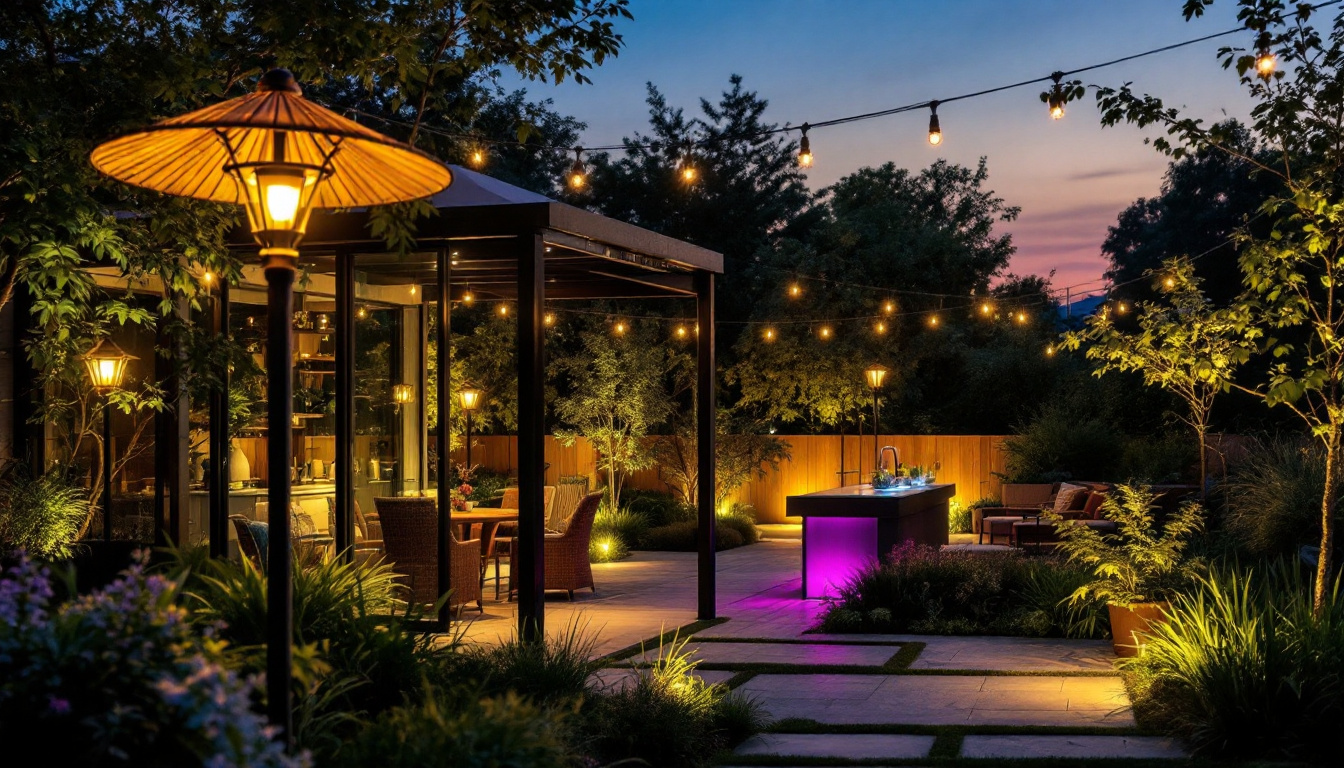
In the realm of architecture, lighting plays a pivotal role in shaping the aesthetic and functional aspects of a space. For lighting contractors, understanding how to optimize lighting for maximum efficiency is crucial not only for energy savings but also for enhancing the overall experience of the environment. This article delves into the principles of architectural lighting, exploring strategies that can be employed to achieve optimal results.
Architectural lighting transcends mere illumination; it is an art form that enhances the beauty of structures while ensuring functionality. Proper lighting can highlight architectural features, create ambiance, and influence the mood of occupants. For contractors, recognizing the significance of lighting in architecture is the first step toward delivering exceptional projects.
Effective lighting design can accentuate the unique characteristics of a building. By strategically placing fixtures, contractors can create focal points that draw attention to specific architectural elements, such as columns, textures, or artwork. The interplay of light and shadow can add depth and dimension, transforming a mundane space into a visually captivating environment.
Moreover, the choice of color temperature plays a significant role in setting the mood. Warm tones can create a cozy atmosphere, while cooler tones may evoke a sense of modernity and cleanliness. Understanding the psychological effects of different lighting temperatures allows contractors to tailor their designs to meet the intended emotional response of the space. For example, in a restaurant, warm lighting can encourage relaxation and conversation, while a gallery may benefit from cooler, more neutral tones that allow the art to take center stage.
Beyond aesthetics, lighting is essential for the functionality of a space. Well-lit areas enhance visibility, contributing to safety and productivity. In commercial settings, proper lighting can improve employee performance and customer satisfaction. For residential spaces, it can facilitate daily activities while creating a welcoming environment.
Contractors must consider the specific needs of each space when designing lighting solutions. For instance, task lighting is crucial in kitchens and workspaces, while ambient lighting is more appropriate for living areas. By balancing different types of lighting, contractors can create a versatile environment that caters to various activities. Additionally, incorporating smart lighting systems can further enhance functionality; these systems allow users to adjust brightness and color temperature according to their preferences or the time of day, providing a customizable experience that can adapt to changing needs.
Furthermore, the integration of natural light into architectural lighting design can significantly enhance both the aesthetic and functional aspects of a space. Large windows, skylights, and light tubes can bring in daylight, reducing the reliance on artificial lighting during the day. This not only helps in energy conservation but also fosters a connection with the outdoors, promoting well-being among occupants. The strategic use of daylighting techniques can lead to a more sustainable design, aligning with modern architectural trends that prioritize environmental responsibility and energy efficiency.
Maximizing lighting efficiency involves a combination of thoughtful design, technology, and sustainability practices. Here are several strategies contractors can implement to enhance lighting efficiency in architectural projects.
One of the most effective ways to optimize lighting is by harnessing natural light. Incorporating large windows, skylights, and light wells can significantly reduce the reliance on artificial lighting. Natural light not only enhances the aesthetic appeal of a space but also contributes to energy savings.
To maximize the benefits of natural light, contractors should consider the orientation of the building and the surrounding landscape. For example, south-facing windows can capture sunlight throughout the day, while overhangs can provide shade during peak hours, reducing glare and heat gain. Integrating light shelves or reflective surfaces can further distribute daylight deeper into the interior. Additionally, using materials with high reflectivity on walls and ceilings can amplify the natural light entering a space, creating a brighter environment without the need for excessive artificial lighting.
Choosing the right lighting fixtures is crucial for optimizing energy efficiency. LED technology has revolutionized the lighting industry, offering significant advantages over traditional incandescent and fluorescent options. LEDs consume less energy, have a longer lifespan, and produce less heat, making them an ideal choice for both residential and commercial applications.
In addition to LEDs, contractors should explore smart lighting systems that allow for greater control over illumination levels. Dimming capabilities, motion sensors, and programmable timers can help reduce energy consumption by ensuring lights are only active when needed. These systems not only enhance efficiency but also provide users with customizable lighting experiences. Furthermore, integrating daylight sensors can automatically adjust artificial lighting based on the amount of natural light present, ensuring optimal brightness while minimizing energy use.
Flexibility in lighting design is essential for adapting to changing needs. Spaces that serve multiple functions require adaptable lighting solutions that can be adjusted based on the activity at hand. For instance, a conference room may need bright, focused lighting during presentations, while softer, ambient lighting is more suitable for informal gatherings.
Contractors can achieve this flexibility by incorporating adjustable fixtures, such as track lighting or pendant lights with dimmers. Additionally, modular lighting systems that allow for easy reconfiguration can accommodate future changes in the space without requiring extensive renovations. This adaptability not only enhances user experience but also supports sustainability by reducing the need for new fixtures as the space evolves. Moreover, incorporating user-friendly controls, such as mobile apps or voice-activated systems, can empower occupants to tailor their lighting environment to their specific preferences, further enhancing comfort and productivity.
The integration of technology into lighting design has opened new avenues for efficiency and control. Smart lighting solutions not only enhance user experience but also contribute to energy savings. Contractors must stay informed about the latest advancements in lighting technology to provide clients with innovative solutions.
Smart lighting controls enable users to manage their lighting environments with precision. Features such as remote access, voice control, and automated schedules allow for seamless adjustments based on individual preferences and occupancy patterns. This level of control can lead to significant energy savings, as lights can be turned off or dimmed when not in use.
Moreover, integrating smart sensors can optimize energy usage further. Occupancy sensors detect when a space is unoccupied and automatically turn off lights, while daylight sensors adjust artificial lighting based on the amount of natural light available. These technologies not only enhance efficiency but also promote sustainability. Additionally, smart lighting systems can be integrated with other smart home devices, creating a cohesive ecosystem that enhances the overall living experience. For instance, lighting can be programmed to mimic natural circadian rhythms, promoting better sleep patterns and overall well-being for occupants.
Data analytics is becoming increasingly important in lighting design. By analyzing usage patterns and energy consumption, contractors can make informed decisions about fixture placement, types of lighting, and control systems. This data-driven approach allows for continuous optimization of lighting efficiency, ensuring that spaces remain functional and energy-efficient over time.
Furthermore, utilizing building management systems (BMS) can provide real-time insights into lighting performance. These systems can track energy usage, identify inefficiencies, and suggest adjustments, enabling contractors to maintain optimal lighting conditions throughout the lifecycle of the building. As the Internet of Things (IoT) continues to evolve, the potential for interconnected lighting systems grows. This connectivity allows for advanced features such as predictive maintenance, where systems can alert facility managers to potential issues before they become significant problems. By leveraging data in this way, contractors can not only enhance the functionality of lighting designs but also extend the lifespan of the fixtures and reduce long-term costs for clients.
As sustainability becomes a priority in architectural design, lighting contractors must consider the environmental impact of their choices. Sustainable lighting practices not only reduce energy consumption but also contribute to the overall health of the planet.
The materials used in lighting fixtures can significantly impact their environmental footprint. Contractors should prioritize products made from sustainable materials, such as recycled metals and eco-friendly plastics. Additionally, selecting fixtures that are designed for longevity can reduce waste and the need for frequent replacements.
Moreover, considering the lifecycle of lighting products is essential. Contractors should advocate for manufacturers that prioritize sustainable practices throughout their production processes, from sourcing materials to end-of-life disposal. This holistic approach to sustainability can enhance the overall appeal of a project while minimizing its environmental impact.
Educating clients and end-users about the importance of efficient lighting practices can foster a culture of sustainability. Providing information on how to use lighting controls effectively, the benefits of natural light, and the impact of energy-efficient fixtures can empower users to make informed decisions that contribute to energy savings.
Additionally, contractors can encourage clients to conduct regular assessments of their lighting systems. By monitoring performance and making necessary adjustments, users can ensure that their lighting remains efficient and effective over time.
Optimizing architectural lighting for maximum efficiency is a multifaceted endeavor that requires a blend of creativity, technology, and sustainability. For lighting contractors, understanding the principles of lighting design and implementing strategic solutions can lead to enhanced aesthetics, improved functionality, and significant energy savings.
By harnessing natural light, selecting energy-efficient fixtures, integrating smart technology, and addressing sustainability, contractors can create spaces that not only meet the needs of their clients but also contribute to a more sustainable future. As the industry continues to evolve, staying informed about the latest trends and technologies will be essential for delivering exceptional lighting solutions that stand the test of time.
Ultimately, the goal of architectural lighting should be to create environments that inspire and uplift, enhancing the human experience while respecting the planet. Through thoughtful design and innovative practices, lighting contractors can play a vital role in shaping the future of architecture.
Ready to bring your architectural lighting designs to life while maximizing efficiency and sustainability? Look no further than LumenWholesale for all your lighting needs. Our spec-grade lighting products not only meet the highest industry standards but are also available at unbeatable wholesale prices. Say goodbye to inflated markups and hello to premium quality and affordability. Plus, with free shipping on bulk orders, you can trust that you’re getting the best value without any hidden fees. Elevate your lighting projects with the perfect blend of quality, affordability, and convenience. Wholesale Lighting at the Best Value is just a click away.

Discover the ultimate guide to mastering dusk to dawn outdoor lighting with insights from top lighting contractors.

Discover the importance of staying updated on outdoor lighting trends and technologies for contractors.

Discover the essentials of outdoor lighting with insights tailored for contractors.

Discover how unique ceiling fans are revolutionizing the lighting industry by combining innovative design with functionality.